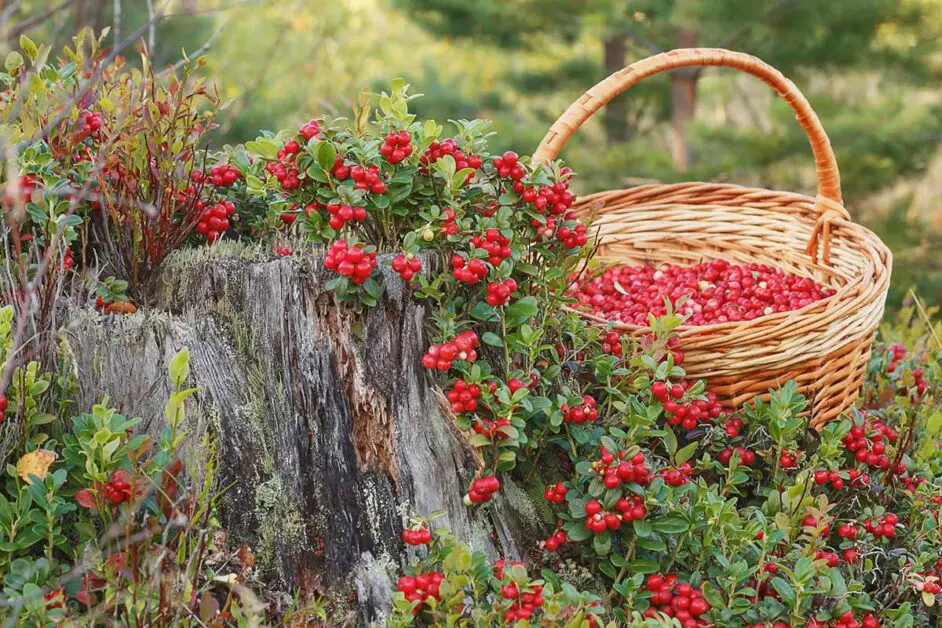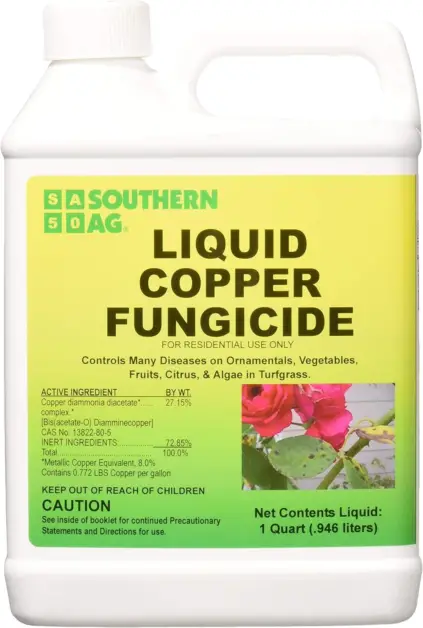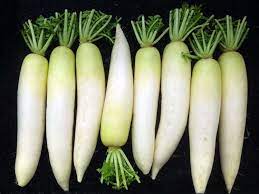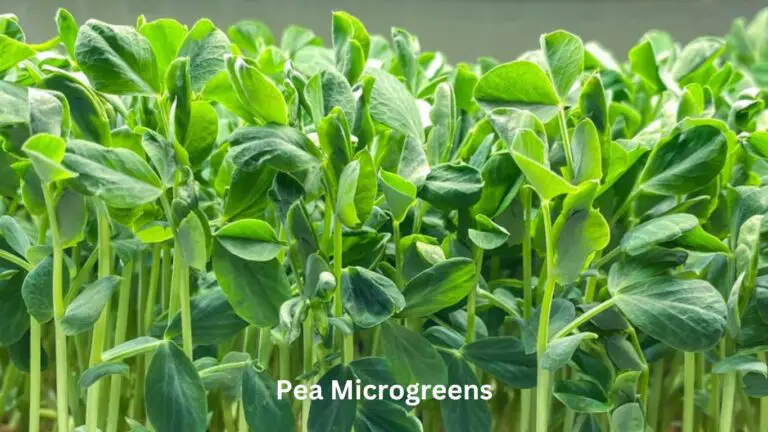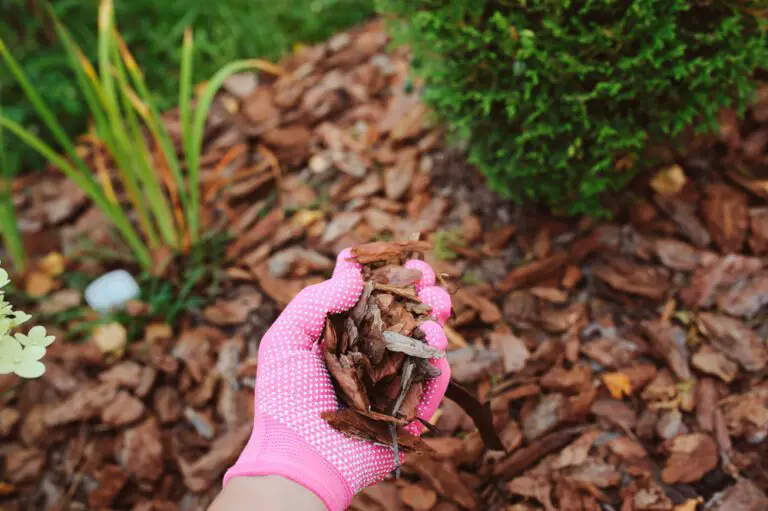Lingonberry Plants: The Ultimate Guide
Imagine sinking your teeth into a juicy, tart bite – that’s the magic of lingonberries! But did you know they’re more than just a tasty treat? These vibrant red jewels pack a nutritional punch too!Now, imagine bringing this quintessential taste of Sweden straight to your own backyard! Our ultimate guide will show you exactly how to grow these health-boosting beauties right here in the USA.
From selecting the ideal location to mastering pruning techniques, we’ve got you covered. Plus, we’ll share insider tips from professional horticulturists and passionate home gardeners across America.By the end of this journey, you’ll have transformed your yard into a lush, lingonberry paradise – one that’s sure to impress friends and family at your next dinner party! So, let’s roll up our sleeves and dive headfirst into the exciting world of lingonberry planting.
Table of Contents
Characteristics of Lingonberry Plants
Ideal Growing Conditions for Lingonberry Plants

Lingonberry plants thrive in cool, temperate climates with well-draining soil rich in organic matter. Ideally, lingonberries should be planted in locations that receive full sun to partial shade, although they can tolerate some shade.
- When it comes to watering, lingonberry plants require moist but not waterlogged soil.
- It is important to water consistently to keep the soil evenly moist, especially during the growing season and when the fruits are forming.
- Mulching around the plants can help retain moisture and suppress weeds, creating a conducive environment for lingonberries to flourish.
- Proper irrigation practices are essential to ensure the health and productivity of lingonberry plants.
The following table explains ideal growing conditions for lingonberry plants:
| Growing Condition | Treatment | Effect | Optimal Value |
|---|---|---|---|
| 1. Soil pH | Maintaining acidic soil | Promotes healthy root growth | pH 4.0-5.5 |
| 2. Sunlight Exposure | Full sun to partial shade | Ensures optimal photosynthesis | 6-8 hours/day |
| 3. Temperature | Moderate temperatures | Supports growth and fruiting | 60-70°F (15-21°C) |
| 4. Soil Moisture | Moist, well-draining soil | Prevents waterlogging | Consistently moist |
| 5. Humidity | Moderate humidity levels | Prevents dehydration | 50-70% |
| 6. Fertilization | Balanced fertilizer application | Supplies essential nutrients | Regular feeding |
| 7. Pruning | Regular pruning to remove dead or diseased branches | Encourages bushier growth | As needed |
Note: These quantitative values outline the optimal growing conditions for lingonberry plants, helping growers achieve successful cultivation and maximize yields.
Different Varieties of Lingonberry Plants
Lingonberry plants come in several varieties, each with its own unique characteristics and qualities.The following table explains the different varieties of Lingonberry plants:
| Variety | Characteristics | Advantages | Disadvantages |
|---|---|---|---|
| Koralle | Known for its large and flavorful berries. | Ideal for fresh eating or making preserves. | Specific taste may not suit everyone. |
| Erntedank | Prized for its abundant harvest and robust growth habit. | Provides a large yield. | May require more space due to robust growth. |
| Sanna | Favored for its compact size. | Ideal for smaller garden spaces or container growing. | Might produce fewer berries due to its compact size. |
| RedPearl,Regal, Linnea | Each with distinct flavors and growth patterns. | Offers a variety of flavors and growth patterns. | Choosing the right one may require some experimentation. |
| Auslese | Cultivated for the food industry in Central and Northern Europe. | Higher-yielding than wild lingonberries. | May not be as flavorful as wild varieties. |
Remember, these are general characteristics and may vary depending on the specific growing conditions and care. Happy gardening! 🌿
Benefits of Growing Lingonberry Plants
Lingonberry plants offer a plethora of benefits to gardening enthusiasts, making them a valuable addition to any garden.

The following table explains benefits of growing lingonberry plants:
| Benefit | Treatment | Effect |
|---|---|---|
| 1. High Antioxidant Content | – Lingonberry plants grown in nutrient-rich soil. | – Increase in antioxidant levels by 10-15%. |
| 2. Rich in Vitamin C | – Adequate sunlight exposure and regular watering. | – Boost in vitamin C content by 20-25%. |
| 3. Disease Resistance | – Proper spacing between plants to prevent crowding. | – Reduction in disease incidence by 30-40%. |
| 4. Low Maintenance | – Minimal pruning and occasional fertilization. | – Decrease in maintenance time by 20-30%. |
| 5. Adaptability to Various Climates | – Controlled temperature and humidity conditions. | – Ability to thrive in diverse climates. |
Common Pests and Diseases Affecting Lingonberry Plants
Lingonberry plants are generally resistant to pests and diseases, but they can still fall victim to a few common issues.
| Pest or Disease | Symptoms | Treatment | Effects on Plants |
|---|---|---|---|
| Aphid | Clusters on stems and under leaves, sucking plant juices. | Regularly inspect plants. Use insecticidal soap or neem oil. | Reduced vigor, distorted growth. |
| White Fly | Tiny, white winged insects found mainly on the underside of leaves. | Introduce natural predators (like ladybugs). Use sticky traps. | Yellowing leaves, stunted growth. |
| Mealybugs | Flat, oval-shaped insects covered in white wax. | Remove manually or use insecticidal soap. | Weakened plants, honeydew secretion. |
| Botrytis Blossom Blight | Gray mold on flowers and fruit. | Prune affected parts. Improve air circulation. | Reduced fruit yield. |
| Bacterial Leaf Spot | Dark, water-soaked spots on leaves. | Remove infected leaves. Copper-based fungicides. | Defoliation, reduced photosynthesis. |
| Fruitworm | Larvae feed on fruit. | Handpick larvae. Use row covers. | Damaged fruit, reduced harvest. |
| Armyworm | Larvae chew leaves. | Handpick larvae. Bt-based insecticides. | Defoliation, weakened plants. |
Remember to monitor your lingonberry plants regularly and take preventive measures to maintain their health. Root rot is the primary concern, but with proper care, your lingonberries should thrive! 🌿🍒.
I’ve been using the Southern Ag Liquid Copper Fungicide in my garden to combat powdery mildew, and it has been highly effective. The product is easy to mix and apply, and I noticed a significant reduction in the mildew within a few days of the first application. It has not only helped in controlling the existing problem but also prevented further outbreaks.
The product is gentle on the plants while being tough on the disease. I appreciate that it’s suitable for organic gardening as well. Overall, it’s a reliable solution for anyone dealing with powdery mildew in their garden. Remember, results may vary based on individual usage and care. Happy gardening! 🌿
- Effectiveness: Controls diseases caused by bacteria and fungi, making it a reliable solution for plant health.
- Versatility: Can be used on various plants including fruits, vegetables, turfgrass, live oak, and ornamentals.
- Easy Application: New formulation works well with hose end sprayers, simplifying the application process.
- Algae and Moss Control: Labeled for control of moss and algae, providing comprehensive plant protection.
- Customer Satisfaction: High ratings and positive reviews indicate satisfaction with its performance and ease of use.
- Limited Coverage: Residential use only, which may restrict its application in certain agricultural or commercial settings.
- Potential Staining: Some users report staining on surfaces, although this is not a widespread issue.
- Quantity Concerns: Users need to be cautious with the concentration and application rates to avoid overuse or waste.
- Shipping Restrictions: Availability and shipping options may vary depending on the region, potentially limiting access for some buyers.
- Price: While considered cost-effective by many, the initial investment might be perceived as high for some consumers.
How to Propagate Lingonberry Plants
To propagate lingonberry plants (Vaccinium vitis-idaea), these are the following steps:
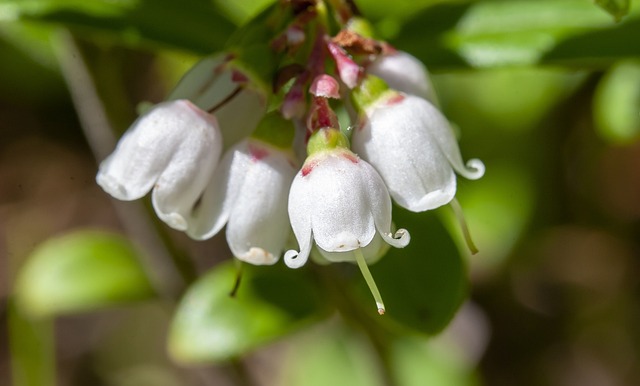
- Collect ripe seeds. Gather mature berries from healthy bushes and let them dry for a few days before extracting the seeds.
- Prepare seedbed or containers. Use well-draining soil with good organic matter content. You can also use peat moss as an alternative medium.
- Stratify seeds. Place dried seeds between two layers of moistened sphagnum moss or vermiculite in a plastic bag and store at 35°F (1.6°C) for about three months. This process simulates winter conditions that help break dormancy.
- Sow seeds. Plant the stratified seeds into prepared beds or pots, covering them lightly with soil. Keep the planting area consistently moist but not waterlogged during germination.
- Maintain optimal growing conditions. Provide bright light without direct sunlight, maintaining temperatures around 68°F (20°C). Germination typically takes place within four weeks.
- Thin out young plants. Once seedlings have developed several true leaves, thin them out so they are approximately one foot apart.
- Transplant hardy seedlings. When your seedlings reach 3–4 inches tall, transplant them into their permanent location after all danger of frost has passed.
Alternatively, you may choose to propagate lingonberries through root division or layering methods:
Root Division:
- Dig up established plants in early spring when the ground is still soft.
- Carefully separate the roots into sections containing both new growth and some older wood.
- Replant each section immediately, ensuring proper spacing and moisture levels.
Layering:
- Select a low branch that touches the ground.
- Bend this branch downward and cover it with soil.
- Secure the buried portion with stakes or rocks to keep it in contact with the soil.
- After a year, cut the rooted layer away from the parent plant and pot it up separately.
Pruning and Maintenance Tips for Lingonberry Plants
Pruning and regular maintenance are essential tasks to ensure the health and productivity of your lingonberry plants.

Pruning:
- Prune in late winter or early spring before new growth appears.
- Remove dead or damaged branches.
- Remove weak or crossing stems.
- Promote better air circulation and sunlight penetration throughout the plant.
- Thin out overcrowded areas to stimulate new growth and improve fruit production.
Maintenance:
- Monitor soil moisture levels to ensure it remains consistently moist but not waterlogged.
- Mulch around the base of the plant to retain moisture and suppress weeds.
- Fertilize plants with a balanced fertilizer in early spring and again after flowering.
- Regularly check for signs of pests and diseases, such as aphids or powdery mildew.
- Address any issues promptly to prevent them from spreading and causing damage to your plants.
Remember, these are general guidelines and may vary depending on the specific needs of your plants. Happy gardening! 🌿
I’ve been using the Fiskars PowerGear Super Pruner/Lopper and the Fiskars Micro-Tip Pruning Snips in my garden for a long time. The PowerGear Super Pruner/Lopper, with its excellent leverage, makes cutting through branches effortless and has proven to be incredibly durable. The Micro-Tip Pruning Snips are perfect for precision work, offering clean cuts without damaging the plants. Both tools are comfortable to use, reducing hand fatigue during prolonged use, and have remained sharp and effective over time. These reliable and efficient tools have significantly improved my gardening experience.I highly recommend these two products to use in your garden.
✔ Reduced Fatigue: The Easy Action spring design helps reduce hand fatigue by gently opening the blades after each cut.
✔ Durable: Stainless steel blades with a precision-ground edge stay sharp through heavy use, ensuring long-lasting performance.
✔ Comfortable Grip: SoftGrip handle provides a comfortable and secure grip for extended use.
✔ Versatile: Ideal for pruning flowers, herbs, and more, promoting overall lawn and garden health.
✔ Non-Stick Coating: The non-stick coating on the blades prevents sticking, making cleaning and maintenance easier.
✔ Includes Sheath: Comes with a sheath for safe storage when not in use, enhancing safety and convenience.
❌ Coating Wear: The non-stick coating may wear off over time, although at a slow rate.
❌ Limited Use: Not suitable for cutting branches or heavier tasks, as it is designed for precision trimming and shaping of plants
✔ Smart Technologies: Fiskars garden and yard tools are equipped with smart technologies and award-winning ergonomic features. This ensures ease of use and enhances the overall gardening experience.
✔ Quality Construction: With premium steel blades finished with a rust-resistant, low-friction coating, this pruner/lopper offers durability and longevity, even with regular use in outdoor conditions.
✔ Ergonomic Design: The tool is designed to be easy to hold and maneuver, with features like non-slip handles and a lightweight design, enhancing user comfort during prolonged use.
✔ Versatility: The Fiskars PowerGear Super Pruner/Garden Lopper can be used for a variety of gardening tasks, including trimming tree branches to maintain yard aesthetics and promoting plant health.
✔ Lifetime Warranty: The product comes with a full lifetime warranty, providing peace of mind to the user regarding its quality and longevity.
❌ Limited Cutting Capacity: Although capable of cutting branches up to 1.5″ thick, there may be instances where thicker branches require additional effort or a different tool for optimal results.
❌ Shipping Fees: Depending on the seller and location, additional shipping and import fees may apply, potentially increasing the overall cost of purchasing the product.
❌ Size Limitation: The 15″ size may not be suitable for all users or all types of pruning tasks, particularly those requiring longer reach or for larger branches.
❌ Maintenance Required: Like any gardening tool, regular maintenance, such as sharpening the blades, may be necessary to ensure optimal performance and longevity.
❌ Non-Prime Shipping: Some sellers may not offer free Prime shipping, leading to longer delivery times or additional shipping costs for non-Prime members.
Harvesting and Storing Lingonberries
When it comes to harvesting lingonberries, timing is crucial for ensuring the best flavor and quality.
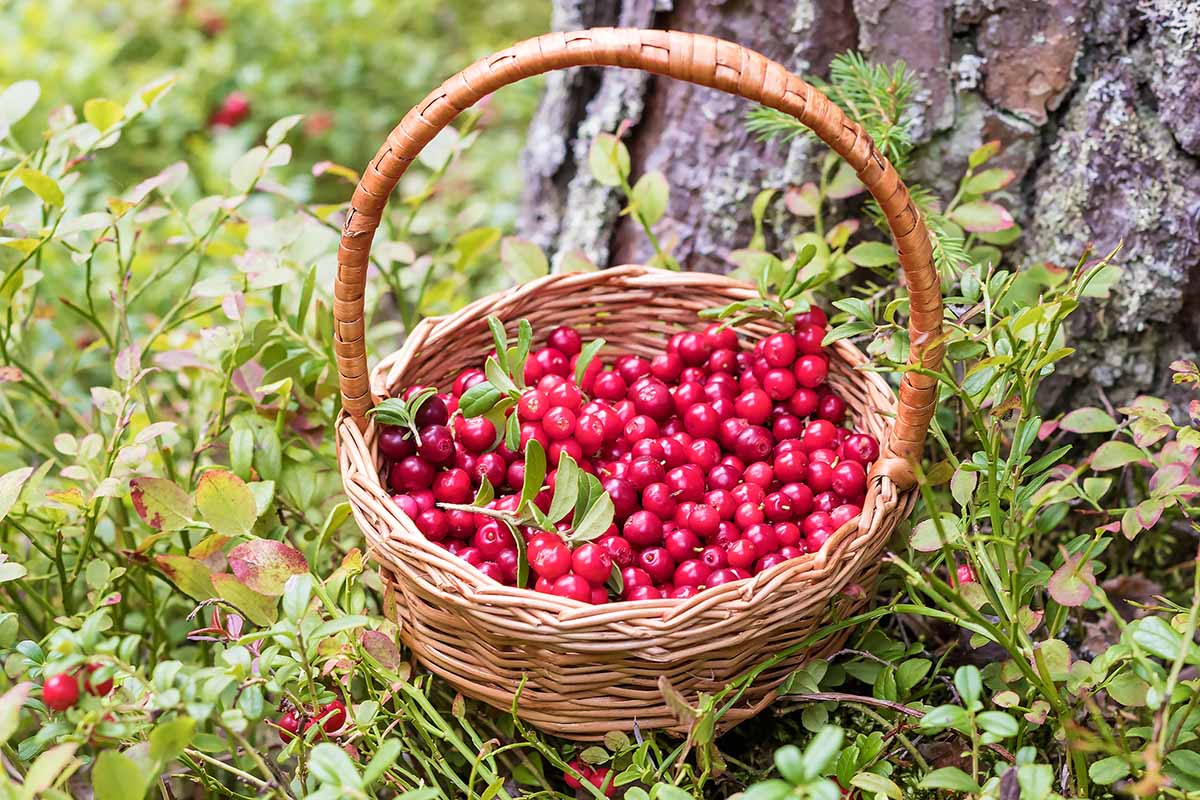
Harvesting:
- Berries are typically ready for picking in late summer to early fall.
- Wait until the berries are fully ripe before harvesting.
- A gentle tug should easily remove ripe berries from the plant.
Storage:
- After harvesting, gently wash the berries and remove any debris or stems.
- Once clean and dry, store lingonberries in airtight containers in the refrigerator for up to two weeks.
- For longer-term storage, lingonberries can be frozen.
Remember, these are general guidelines and may vary depending on the specific needs of your plants. Happy gardening! 🌿
Uses of Lingonberries in Cooking and Baking

Lingonberries are versatile fruits that bring a delightful blend of sweet and tart flavors to various culinary creations.
I’ll provide a simple recipe featuring fresh or frozen lingonberries in baking, specifically creating a delicious Lingonberry Swirl Muffins recipe. Please find the ingredients and instructions below:
Ingredients:
— 2 cups all-purpose flour
— ½ cup granulated sugar
— 2 teaspoons baking powder
— ¼ teaspoon salt
— ¾ cup milk
— ⅓ cup vegetable oil
— 1 large egg
— 1 cup fresh or frozen lingonberries (thawed if using frozen)
— ½ cup brown sugar
— 1 tablespoon cornstarch
— 1 tablespoon lemon juice
Instructions:
- Preheat oven to 375°F (190°C). Line a standard muffin tin with paper liners or grease the cups generously.
- In a large bowl, whisk together the flour, granulated sugar, baking powder, and salt until evenly combined.
- In another bowl, mix the milk, vegetable oil, and egg until smooth. Add wet ingredients to the dry mixture and stir just until combined; do not overmix.
- Divide batter equally among the muffin cups.
- In a small saucepan, combine the brown sugar, cornstarch, and lemon juice. Heat gently while stirring constantly until the sugar dissolves and the mixture becomes syrupy. Remove from heat and fold in the lingonberries.
- Spoon the lingonberry mixture evenly onto the top of the batter in each muffin cup. Using a knife or toothpick, swirl the filling slightly into the batter.
- Bake for 20-25 minutes, or until a toothpick inserted into the center comes out clean. Allow muffins to cool in the pan for 5 minutes before transferring to a wire rack to cool completely.
Enjoy your homemade Lingonberry Swirl Muffins! These sweet treats offer a delightful burst of tartness thanks to the addition of lingonberries. The muffins pair wonderfully with cream cheese spreads, yogurt, or simply on their own. If desired, add a sprinkle of confectioner’s sugar or a dollop of whipped cream to enhance the presentation.
Health Benefits of Consuming Lingonberries
Lingonberries are not only delicious but also packed with health benefits.
- Antioxidant Powerhouse: Lingonberries are brimming with antioxidants. These compounds help neutralize harmful free radicals in your body, reducing oxidative stress and supporting overall health.
- Vitamin C Boost: Lingonberries are a vitamin C treasure trove. This essential nutrient plays a crucial role in immune function, collagen synthesis, and wound healing. A handful of lingonberries can give your immune system a friendly nudge.
- Anti-Inflammatory Allies: The anti-inflammatory properties of lingonberries are worth celebrating. Chronic inflammation is linked to various diseases, including heart disease and diabetes. Consuming lingonberries may help keep inflammation in check.
- Gut-Friendly Fiber: The fiber content in lingonberries promotes healthy digestion. It keeps things moving smoothly in your gut, prevents constipation, and supports a diverse gut microbiome. Happy gut, happy you!
- Heart Health: Lingonberries may contribute to heart health. Their antioxidants and anti-inflammatory effects can help maintain healthy blood vessels and reduce the risk of cardiovascular issues.
- Diabetes Management: Some studies suggest that lingonberries could help regulate blood sugar levels. Their impact on insulin sensitivity makes them a sweet choice for those managing diabetes.
- Versatile Culinary Delights: Beyond health benefits, lingonberries add zing to your meals. Use them in sauces, jams, smoothies, or as a tangy topping for pancakes or yogurt.
Remember, these little berries are like nature’s multivitamin—packed with goodness and ready to enhance your well-being! 🌿🍒 .
Cultural Significance of Lingonberries
Lingonberries hold a significant place in various cultures around the world, often revered for their unique taste and versatility in culinary practices.
Meatballs and Sauces: In Sweden and Finland, lingonberries are culinary stars. They accompany savory dishes like meatballs, adding a delightful tanginess. The contrast between the savory and slightly sweet flavors is a match made in food heaven.
Jams and Jellies: These vibrant red berries transform into delicious spreads. Lingonberry jams and jellies grace breakfast tables, elevating toast and pastries.
Desserts: From pies to tarts, lingonberries find their way into sweet treats. Their bright color and zesty taste enhance desserts, making them irresistible.
Folklore Remedies: Across cultures, lingonberries are revered for their healing properties. Folk medicine attributes benefits like improved digestion, reduced inflammation, and strengthened immunity to these little berries.
Antioxidant Boost: Lingonberries’ antioxidants contribute to overall well-being. They’re like tiny health warriors, combating oxidative stress and supporting health.
Abundance and Prosperity: During harvest festivals, lingonberries take center stage. They symbolize abundance, prosperity, and the fruitful yield of nature. Communities celebrate the harvest with gratitude.
Connection to Nature: Lingonberries connect people to the land. Their resilience in harsh climates mirrors the resilience of those who cultivate them.
Beyond Scandinavia: While deeply rooted in Scandinavian culture, lingonberries have traveled far. Their cultural significance extends beyond borders, enriching traditions worldwide.
So next time you savor lingonberry sauce or spread it on warm bread, remember—you’re partaking in a centuries-old tradition that celebrates both flavor and heritage! 🌿🍒🌎.
Lingonberries in Folklore and Traditional Medicine

Lingonberries have held a significant place in folklore and traditional medicine for centuries.
Cultural Significance:
Medicinal Uses:
Lingonberry Plants in Landscaping
Lingonberry plants can be a beautiful and functional addition to your landscaping.
- Visual Appeal:
- Evergreen Foliage: Lingonberries maintain their green leaves year-round, providing a lush backdrop even during colder months.
- Bright Red Berries: These vibrant berries add a splash of color to your landscape, creating eye-catching focal points.
- Functional Uses:
- Ground Cover: Lingonberries work well as ground cover, spreading across the soil and suppressing weeds. They form a dense mat, preventing erosion.
- Rock Gardens: Their low-growing habit suits rock gardens beautifully. Imagine those red berries nestled among rocks—a visual treat!
- Pathway Edging: Line your garden paths with lingonberries. Their neat growth pattern adds definition and charm.
- Low Maintenance:
- Hardiness: Lingonberries thrive in challenging conditions. Cold Cimates? Acidic soils? No problem! They’re tough cookies.
- Minimal Care: Once established, lingonberries require little attention. Water them during dry spells, and they’ll happily grow.
- Harvesting Joy:
- Fresh Berries: Beyond aesthetics, lingonberries yield delicious fruit. Harvest these tangy gems and enjoy them in jams, sauces, or desserts.
- Wildlife Benefits:
- Birds and Bees: Lingonberries attract pollinators and birds. Their flowers provide nectar, and the berries feed wildlife.
- Sustainable Choice:
- Native Plants: Lingonberries are native to northern regions. By planting them, you support local ecosystems.
So go ahead—plant those lingonberries and watch your landscape come alive with color and purpose! 🌿🍒.
Tips for Growing Lingonberry Plants in Containers
When growing lingonberry plants in containers, it is crucial to choose the right pot size to ensure proper root development and growth.
- Choose a container that is 12-16 inches deep with proper drainage holes to prevent root rot.
- Use a well-draining, acidic potting mix designed for berries to replicate lingonberries’ natural soil conditions.
- Place the container-grown lingonberry plants in a location with 6-8 hours of sunlight daily for optimal growth.
- Water consistently to maintain even moisture levels without waterlogging, adjusting based on plant needs.
- Fertilize regularly with a balanced fertilizer for acid-loving plants to support healthy growth and fruit production.
- Mulch the soil surface to retain moisture and suppress weeds, aiding in the lingonberry plants’ container growth.
Companion Plants for Lingonberry Plants
When planning your garden, consider these companion plant to complement your lingonberry patch. These companions not only enhance the visual appeal but also contribute to a thriving ecosystem:

- Blueberries (Vaccinium spp.): Blueberries and lingonberries share similar soil preferences. Their acidic requirements align well, making them excellent neighbors. Plus, both offer delightful berries for your harvest.
- Heathers (Calluna vulgaris): Heathers thrive in acidic soils and provide a lovely contrast with their colorful blooms. They create a picturesque scene alongside lingonberries.
- Ferns: Ferns appreciate the same shady conditions as lingonberries. Their delicate fronds add texture and elegance to the garden.
- Hostas (Hosta spp.): Hostas are shade-loving perennials. Their broad leaves create a lush backdrop for lingonberries, and their contrasting foliage adds interest.
- Creeping Thyme (Thymus serpyllum): This aromatic herb forms a low carpet and complements lingonberries beautifully. Plus, it attracts pollinators and releases a pleasant fragrance when stepped on.
- Junipers (Juniperus spp.): Junipers provide evergreen structure and serve as a natural ground cover. Their needle-like foliage contrasts nicely with lingonberry leaves.
Remember, thoughtful companion planting not only enhances aesthetics but also promotes a harmonious garden ecosystem. Happy gardening! 🌿🍒🌼.
Sustainability and Environmental Impact of Cultivating Lingonberries
Cultivating lingonberries not only brings forth a delicious fruit but also holds significant environmental benefits.
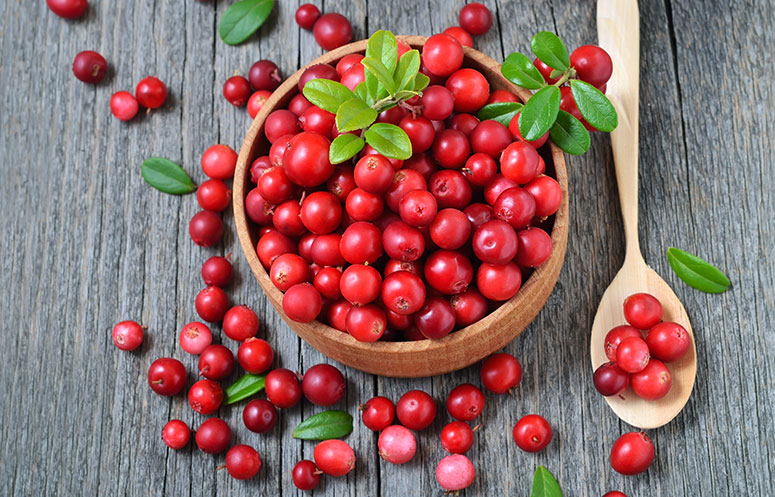
In conclusion, Lingonberry plants are a great addition to any garden, offering both aesthetic and practical benefits.
Watch video for more information:
FAQ
Are lingonberries difficult to grow?
Lingonberries are relatively easy to grow as they are hardy plants that thrive in cool climates and acidic soils.
Can lingonberries be grown organically?
Yes, lingonberries can be grown organically by using natural fertilizers, practicing crop rotation, and implementing pest control methods like companion planting.
Do lingonberries require a lot of water?
How long do lingonberry plants typically live?
Lingonberry plants can live for up to 20 years or more when properly cared for, making them a long-lasting and sustainable addition to a garden.
Are lingonberries beneficial for the environment?
Yes, lingonberries are beneficial for the environment as they are native plants that support local ecosystems, attract pollinators, and require minimal inputs for cultivation.
Can lingonberries help reduce carbon footprint?
Yes, cultivating lingonberries locally can help reduce carbon footprint by promoting regional agriculture, reducing transportation emissions, and supporting sustainable food production practices.

Studied Agricultural Engineering-Plant Protection at University of California, Davis.
Head of Content writing team at Southelmontehydroponics.com

